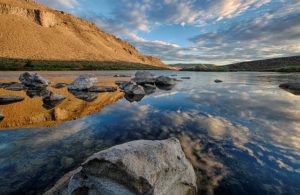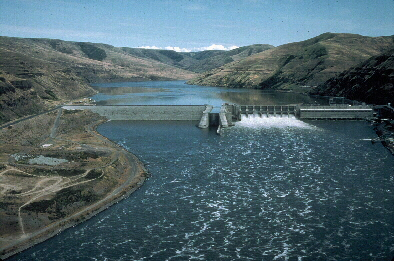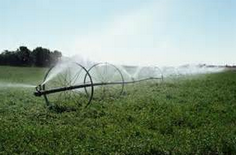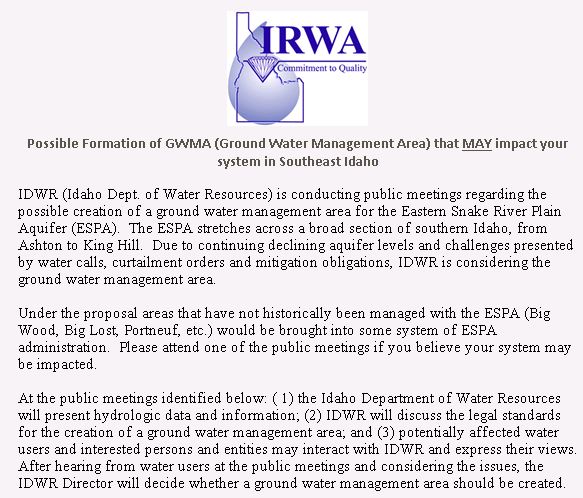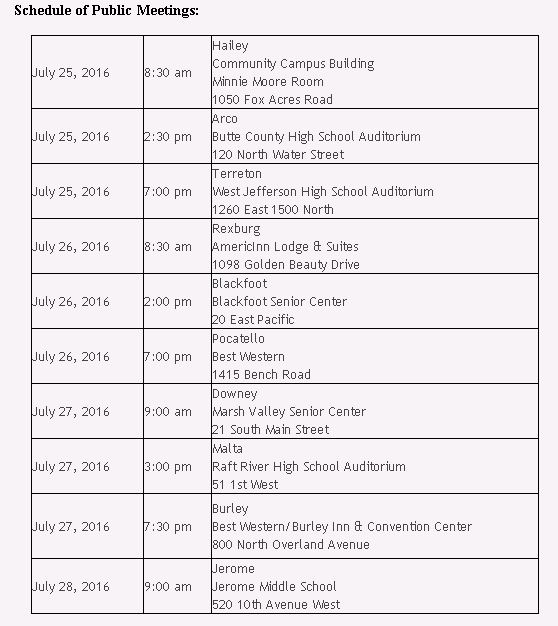Columbia River Treaty Negotiations Begin

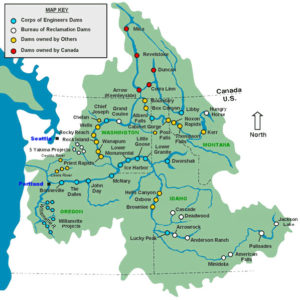
While the negotiation of U.S. international treaties has been in the news lately, the renegotiation of an international treaty of particular importance to the Pacific Northwest has not received much coverage. However, May 29-30, 2018 marked the first round of negotiations between the U.S. and Canada in the effort to renegotiate the Columbia River Treaty.
Notably, May 30, 2018 also marked the 70th anniversary of the historic Vanport flood that wiped out a town of approximately 18,000 residents situated between Portland, Oregon and Vancouver, Washington.[1] On that day in 1948, the Columbia River crested at Portland to fifteen feet above its flood plain and breached the embankment protecting Vanport, which just years earlier was Oregon’s second largest town.[2] While the town of Vanport no longer exists, one of the many legacies of the devastating flood is the Columbia River Treaty and its flood control provisions.
A Columbia River Treaty between the U.S. and Canada was seriously considered beginning in 1944, but it was not until 1960 that the U.S. and Canada began negotiating the Treaty, which was signed in 1961 and took effect in 1964. The Treaty has no specific end date, but 2024 is the earliest either party may terminate the Treaty and to do so, the party must provide a minimum of 10 years written notice of termination.
The impetus for renegotiating now is that the assured annual flood control procedures in the Treaty will end after 2024 whether or not the Treaty is terminated.[3] After 2024, on-call flood control measures will apply requiring the U.S. to ask Canada to store water after the U.S. has used all available flood control space in U.S. reservoirs.[4] These on-call procedures have been referred to by Oregon and Washington’s Congressional Representatives Peter DeFazio and Cathy McMorris Rodgers as “ad hoc, unplanned” and with the likely potential to cause uncertainty and international disputes.[5]
The Canadian storage created by the Columbia River Treaty includes 15.5 million acre-feet of water in the upper reaches of the Columbia, including the storage behind Libby Dam, which sits near the U.S. and Canada border in Montana and created Lake Koocanusa, a reservoir that backs up 42 miles into British Columbia. While the U.S. benefits from the flood control measures, both countries realize a benefit from the power generated. However, the Treaty was not written specifically to provide water for irrigation or fish subsistence.[6]
Both Canada and the U.S. have spent recent years studying the effects of the Treaty and the various issues that will serve as levers in the negotiation to balance the current and future needs of both countries. These studies ultimately led both countries to consult with stakeholders in their regions and to issue regional recommendations that will serve as the basis for renegotiating the Treaty.[7]
While neither county has given notice of termination, the entities began renegotiating the Treaty on May 29-30, 2018. The next scheduled negotiation is August 15-16, 2018. [8] The renegotiation of the Columbia River Treaty will be important for Pacific Northwest irrigators and water users as the eventual revisions to the Treaty will likely: impact future reservoir storage, alter the timing of reservoir releases, take into account ecological and fish impacts of the Columbia River Power System, and effect utility rates for all electricity customers.
[1] Michael N. McGregor, The Vanport Flood, The Oregon History Project: Oregon Historical Society (Mar. 17, 2018) available at https://oregonhistoryproject.org/articles/essays/the-vanport-flood/#.WxhNxkgvyUm.
[2] Carl Abbott, Vanport, The Oregon Encyclopedia: Oregon Historical Society (Mar. 17, 2018) available at https://oregonencyclopedia.org/articles/vanport/#.WxhNwUgvyUn.
[3] Northwest Power & Conservation Council, Columbia River Treaty, available at https://www.nwcouncil.org/reports/columbia-river-history/columbiarivertreaty.
[4] Id.
[5] Cathy McMorris Rodgers & Peter DeFazio, Modernizing our Columbia River Treaty, OregonLive (Mar. 14, 2018) available at http://www.oregonlive.com/opinion/index.ssf/2018/03/peter_defazio_modernizing_our.html#article.
[6] Columbia River Treaty.
[7] Id.
[8] U.S. Dept. of State, Press Release: On the Opening of Negotiations to Modernize the Columbia River Treaty Regime (May 30, 2018) available at https://www.state.gov/r/pa/prs/ps/2018/05/282867.htm.

